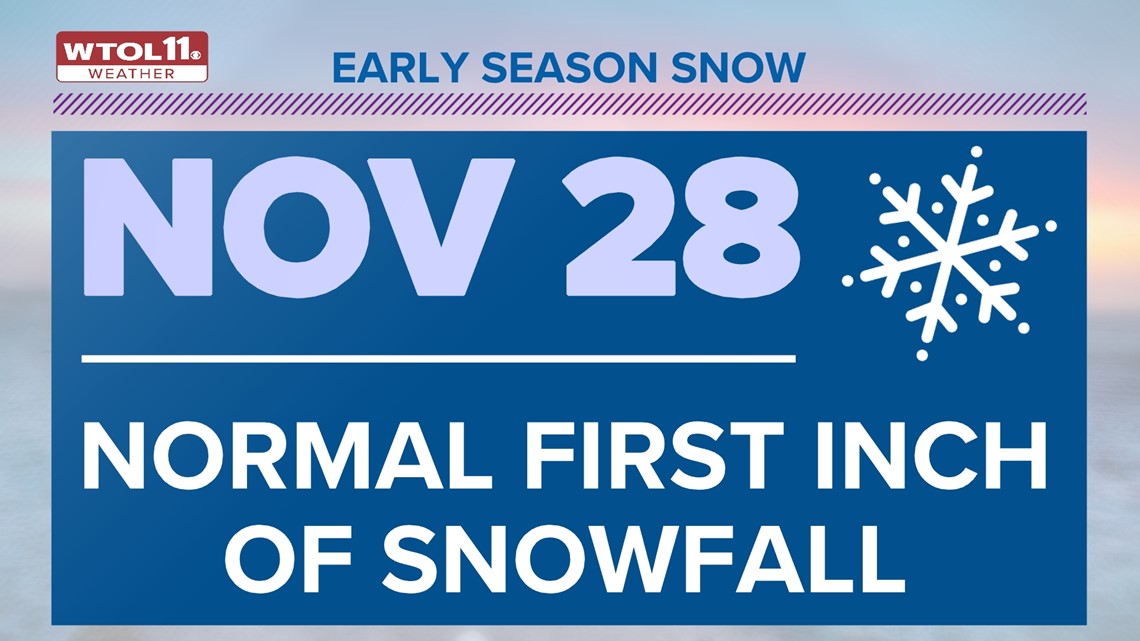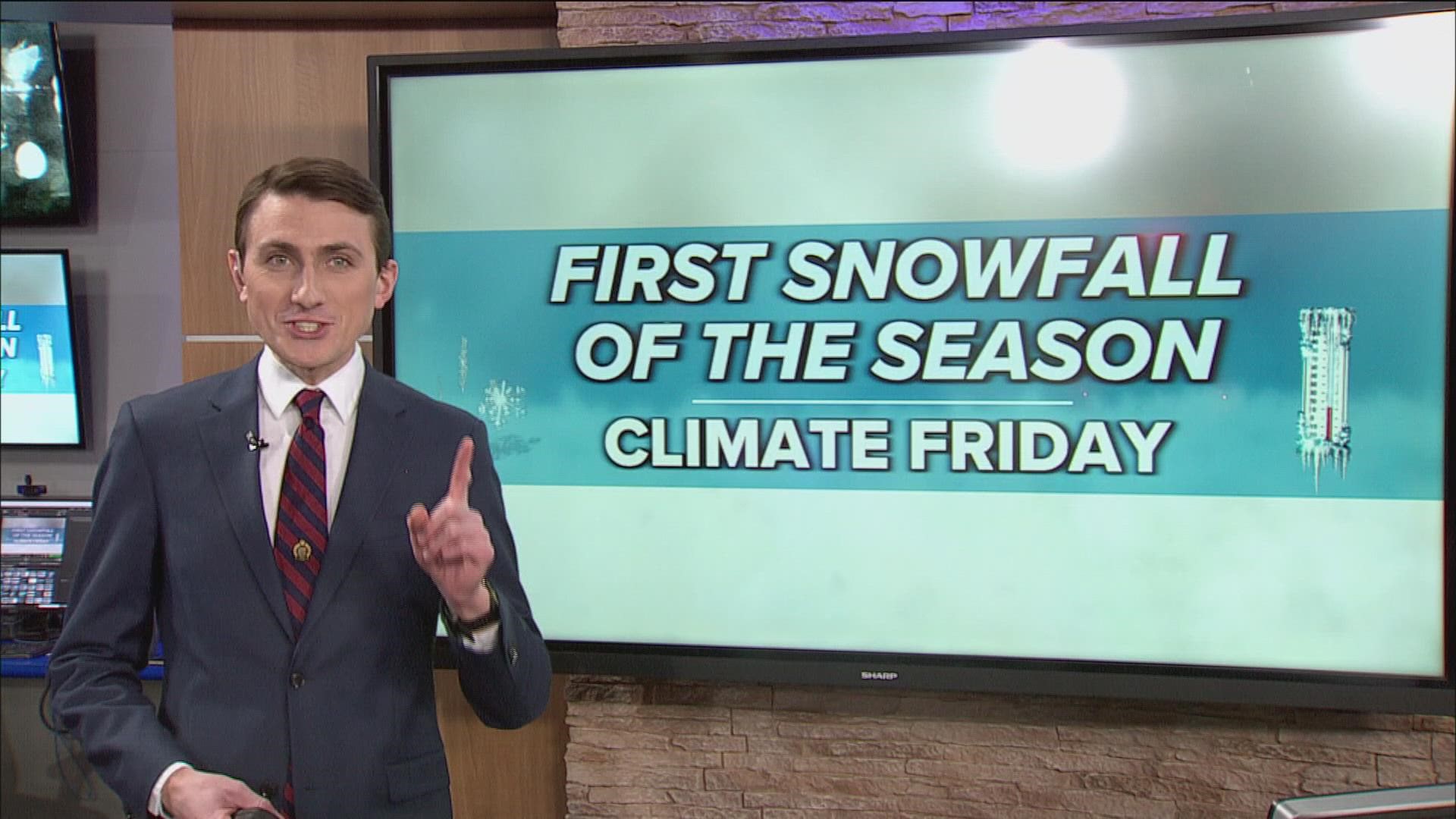TOLEDO, Ohio — The first snow of the season fell across much of northwest Ohio and southeast Michigan this week. November often brings wet snow that melts quickly.
As the season transitions from autumn to winter, these light snowfalls are a reminder of what's to come.
But is climate change impacting November snow?
Meteorologist John Burchfield explains this in this week's edition of Climate Friday.
Nov. 12 dosed out the first snow of the season for much of Ohio and Michigan. The first snow normally occurs on Nov. 17 and the first inch of accumulation typically falls on Nov. 28.


Even though the area has already picked up its first dusting of snow, heavier accumulations will have to wait.
Some years, the first inch doesn't even come until December. In 2012, the first snowfall of the season didn't occur until Dec. 21. And, that storm system only brought a little over half an inch of snow.


This season got off to an earlier start with several systems in November that each delivered a light dusting.
As a whole, November averages 1.7 inches of accumulation.
But is climate change impacting early-season snow?
November and December are getting warmer, a trend felt in recent years and decades. November has grown 1.4 degrees warmer in the last decade and December has become 3.1 degrees milder in the past ten years. Overall, late autumn and early winter have become significantly milder and less snowy in recent years.
With this warming trend, some storm systems that bring moisture to the region produce rain instead of snow.
And when it does snow, it's often lighter and later in the season.
Decades ago, snowfall before Christmas was much more common. Now, the heaviest snowstorms often don't strike until February.
This backloaded nature of winter has been evident in the past few La Niña winters, with a quiet start to December and significant snowstorms in February.
Will the winter of 2022-2023 follow suit? Only time will tell.
Climate change has delayed the onset of wintry weather, postponing both frigid temperatures and snowy weather. November and December are becoming less snowy and milder feeling, on average.
But there are exceptions to every rule and some winters will stand out from the norm.

